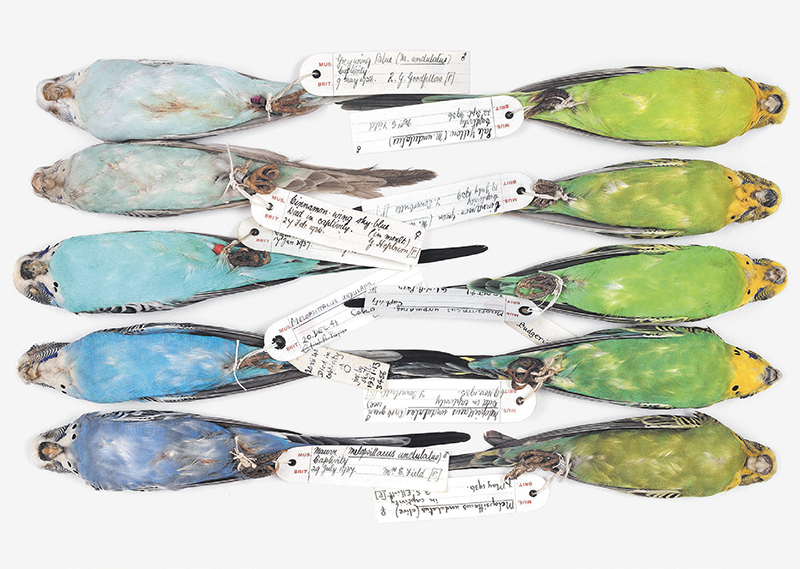From Bird: Exploring the Winged World, which was published in November 2021 by Phaidon Press. The photograph originally appeared in The Budgerigar in 2014.

Wild budgerigars are green. This is because they produce yellow psittacofulvin pigment, and also ostensibly blue melanin pigment. Occasionally a naturally occurring mutation removes one of the pigments to produce a yellow or blue budgie. It was only after these diminutive Australian parakeets were introduced to Europe as pets in the mid-nineteenth century that breeders began to deliberately propagate color variants, interbreeding birds to remove all pigment or to broaden the spectrum further. Mutations can substitute one color for another, or dilute a color. Feather structure also influences the colors we perceive. The blue melanin is actually gray-black, and only appears blue because of the peculiar formation of the budgie’s feather barbs. Another mutation increases this optical illusion, doubling the effect. Skilled breeders are artists in their own right, and the seemingly endless color range of budgies represents a veritable masterpiece of selective breeding.






















































































